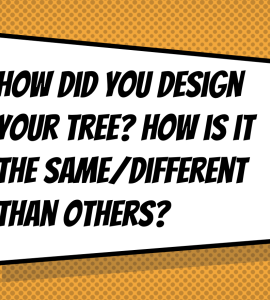
Resource type
Use type
Project name
Standards & Guidelines
Lesson Overview
This lesson introduces students to how decision trees, a basic form of neural networks, can be designed in multiple ways to classify a complex dataset. Students will create their own decision trees that can be used to classify various types of pastas and to classify clothing as suitable for winter or not.
Total Lesson Time: Three 45 minute lessons
Learning Objectives: Students will be able to . . .
- Build a decision tree
- Use test data to evaluate the design of a decision tree
- Explain that training data make decision trees specific to a purpose
- Draw connections between the structure of a decision tree (e.g., content of a node) and the background knowledge of the person who made it to show how their prior experience influenced the design of the decision tree
- Explain that a creator’s understandings, experiences, background, and assumptions in a decision tree are called biases.
Vocabulary Introduced: classify, bias
Pacing:
Day 1
- Opening (5 min)
- Introduction to new material, terms, guided practice (10 min)
- PastaLand Activity (18 min)
- Mid-workshop Interruption (7 min)
- Closing (5 min)
Day 2
- Opening (5 min)
- Introduction to new material, guided practice (10 min)
- Is it for Winter? Activity Part 1 (20 min)
- Closing (10 min)
Day 3
- Opening (10 min)
- Introduction to new material (5 min)
- Is it for Winter? Activity Part 2 (15 min)
- Closing + Exit Ticket (15 min)
Planning Guide
Preparation Needed: 15-30 minutes each day
Materials:
- Chart paper & markers for students to create worksheets
- At least 6 pieces of unique types of pasta for each student
- Pictures of clothes for "is it for Winter?" activity
Prep Needed for Teaching In-Person:
- Cut out pictures of clothing
- Optional: create an example/model
Log in or register to view attachments and related links, and/or join the discussion. If you are already logged in, scroll to the bottom of this page for the links.
Teacher Modifications
One of the amazing things about this curriculum is how much teachers have been involved in modifying it make it more fun, engaging, and inclusive for their students.
Click on Teacher Modifications in the Navigation menu to see what teachers of made!
Activity Usage
Copyright held by MIT STEP Lab
License: CC-BY-NC under Creative Commons
These materials are licensed as CC-BY-NC 4.0 International under creative commons. (For more information visit https://creativecommons.org/licenses/by-nc/4.0/). This license allows you to remix, tweak, and build upon these materials non-commercially as long as you include acknowledgement to the creators. Derivative works should include acknowledgement but do not have to be licensed as CC-BY-NC. People interested in using this work for for-profit commercial purposes should reach out to Irene Lee at [email protected] for information as to how to proceed. Attribution-NonCommercial 4.0 International (CC BY-NC 4.0)
Attribution:
The original activity “PastaLand” in the Decision Tree Lesson was created in 2018 for the CSTA workshop “Investigating Fairness in Machine Learning” by Irene Lee and Fred Martin. The activity "Is it for Winter?" was developed through the Science+C project, led by the Education Development Center (EDC) , as part of the AMSinDS Curriculum, led by Irene Lee.

